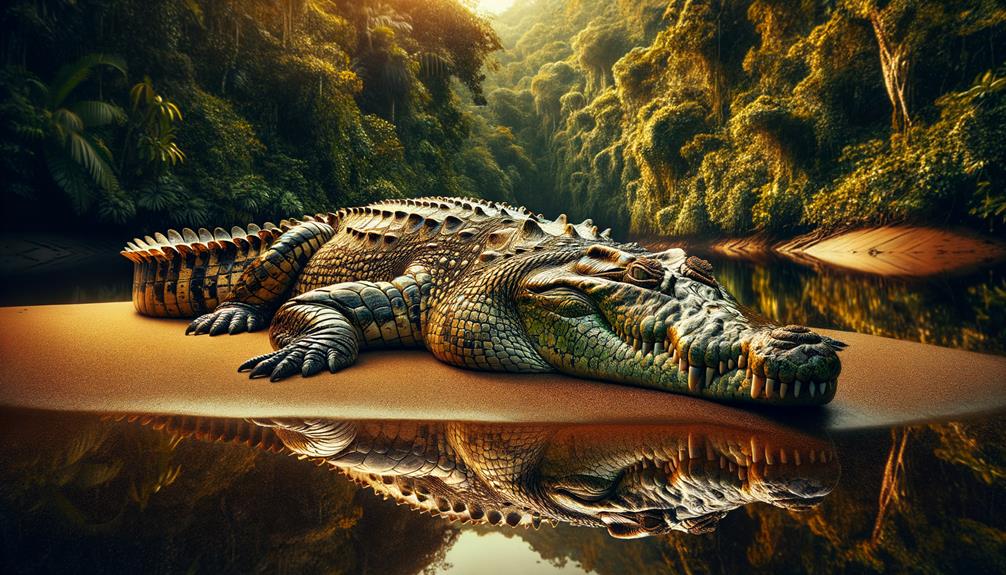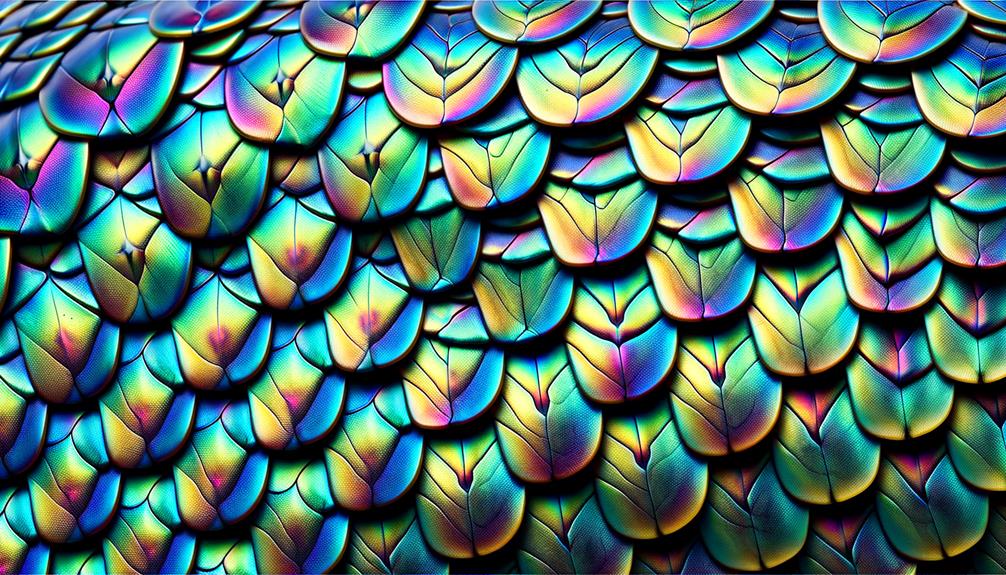Leopard geckos have a fascinating behavior – they lick their eyelids. This unique habit is more than just a quirk; it's essential for their well-being. By frequently cleaning their eyelids, these reptiles remove dirt and debris, preventing potential infections and serious conditions like corneal ulcers. This routine raises intriguing questions about what drives this behavior and what changes might indicate underlying health issues. For instance, what can we learn about leopard gecko care by examining this habit?
Importance of Eye Hygiene
Maintaining good eye hygiene is crucial for leopard geckos to prevent infections and ensure their overall well-being. As a reptile owner, I know that these desert dwellers are prone to eye problems due to their natural habitats. A clean environment plays a vital role in maintaining their eye health. A dirty enclosure can harbor dust and debris, leading to eye infections like conjunctivitis.
Regular cleaning of their habitat is essential to prevent these issues. Leopard geckos naturally lick their eyelids to remove dirt and dust from their eyes, which helps stave off infections and more severe conditions like corneal ulcers. However, despite their best efforts, they can still develop eye problems.
Regular veterinary check-ups are vital for early detection and treatment of these issues. Eye problems like retained eye caps are particularly concerning and require prompt removal to prevent further complications. By keeping their environment clean and staying on top of veterinary care, I can help ensure my leopard gecko's eyes remain healthy, preventing unnecessary suffering and promoting their overall health.
How Leopard Geckos Clean Their Eyes
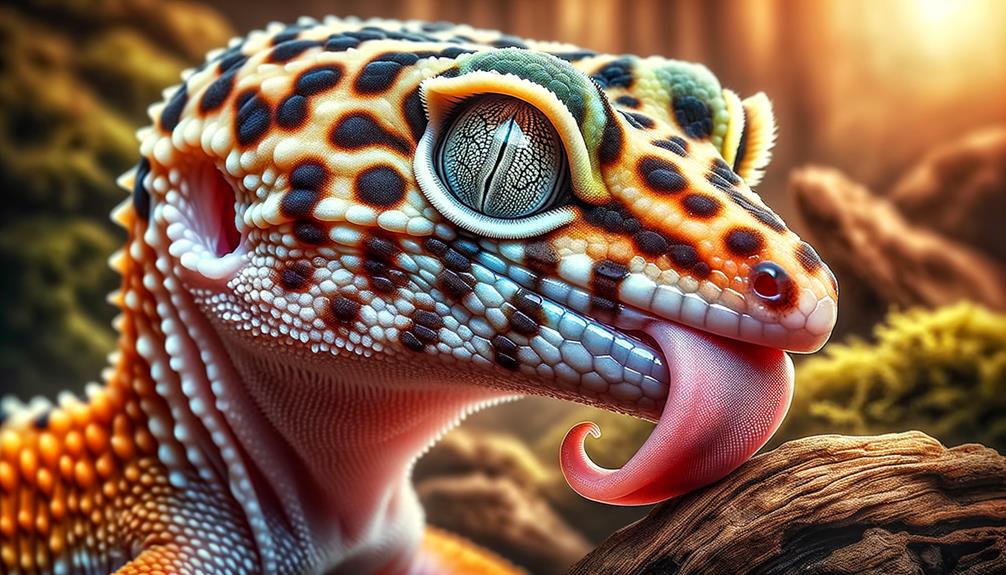
Understanding how leopard geckos clean their eyes provides valuable insight into their meticulous grooming habits and natural mechanisms for maintaining eye health. These reptiles use a fascinating method of eye-licking to keep their eyes clean, a behavior that's not just quirky but vital to their daily routine. By licking their eyes, leopard geckos remove dirt, dust, and other debris that accumulate throughout the day, especially in their natural habitat.
The process involves the gecko extending its tongue to its eyelids and eyeballs, wiping away potential irritants. This grooming activity typically occurs during their most active periods, which are morning and evening. As a veterinary professional with experience in reptile care, I've observed how essential this behavior is in preventing eye conditions like conjunctivitis and corneal ulcers.
Leopard geckos also have a transparent scale over their eyes, which aids in keeping them moist and clean. However, despite this protective layer, regular licking is necessary to maintain their eyes free from harmful particles. This meticulous grooming also supports healthy shedding, as clean eyes are less prone to infections that could complicate the process.
Factors Influencing Eyelid Licking
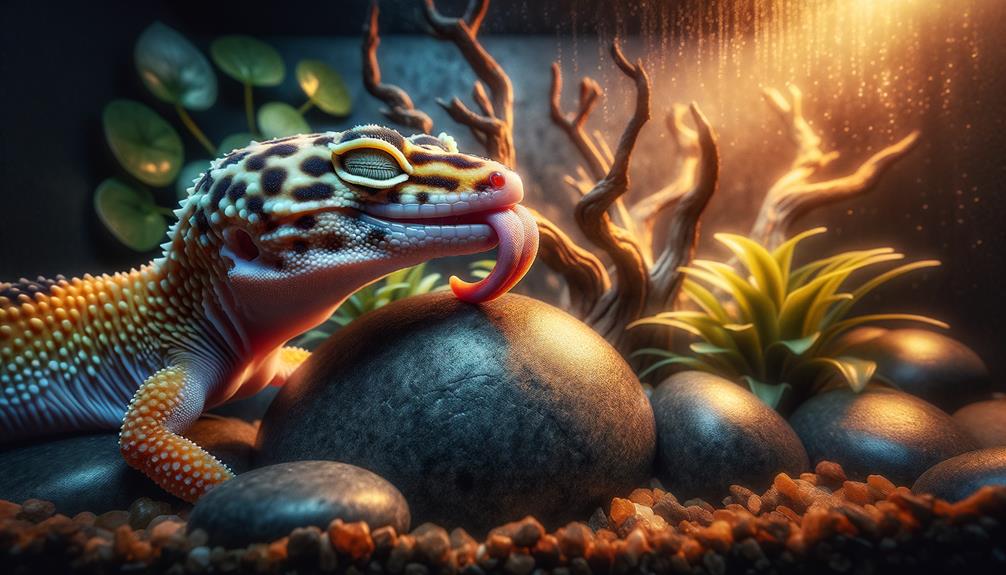
Several factors influence how often leopard geckos lick their eyelids, and understanding these factors can help you create an ideal environment for your pet.
Humidity is a key factor. Leopard geckos need a humid hide to shed their skin properly. Without enough humidity, they may have trouble shedding, which can cause skin to build up around their eyes. This can lead to problems opening their eyes, and they may lick their eyelids more to clear away debris.
The gecko's overall health is also crucial. If your gecko has an eye infection or irritation, it may lick its eyelids more frequently. In such cases, a saline solution or eye drops recommended by a veterinarian can help alleviate the issue. However, it's essential to monitor your gecko for signs of distress, such as keeping its eyes shut, which could indicate a more severe problem.
The cleanliness of the environment also plays a significant role. A dirty habitat can introduce irritants that cause your gecko to lick its eyelids more often as it tries to clean its eyes. By understanding these factors, you can create an ideal environment for your leopard gecko and ensure its ocular health and overall well-being.
Potential Eye Health Issues
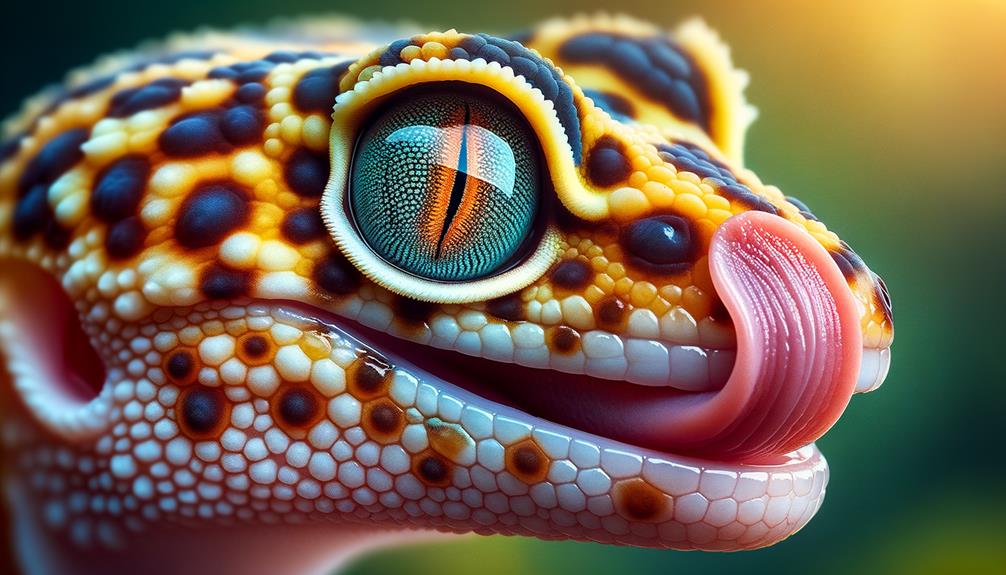
One common issue in leopard geckos is eye infections, which can cause significant discomfort and irritation. As a veterinary tech with experience in reptile care, I've seen how these infections can lead to symptoms like refusal to open eyes, excessive licking, and noticeable swelling. Bacterial, fungal, or parasitic infections can cause these issues, severely impacting a leopard gecko's well-being.
A vitamin A deficiency is another critical factor contributing to eye problems in leopard geckos. This deficiency can manifest as swollen eyelids, excessive shedding around the eyes, and difficulty opening them. Reptile-formulated vitamin A drops can help alleviate these issues, but early detection is crucial.
Shedding is a natural process for leopard geckos, but complications can arise if the shed skin doesn't come off properly around the eyes. This can lead to retained shed, which worsens eye problems and may require veterinary intervention.
Leopard geckos with eye problems may also exhibit lethargy and loss of appetite, potentially leading to weight loss. Regular veterinary check-ups are vital for early detection and treatment of these eye issues. Maintaining a clean and hygienic environment goes a long way in preventing infections and ensuring the overall health of your gecko.
Tips for Gecko Care
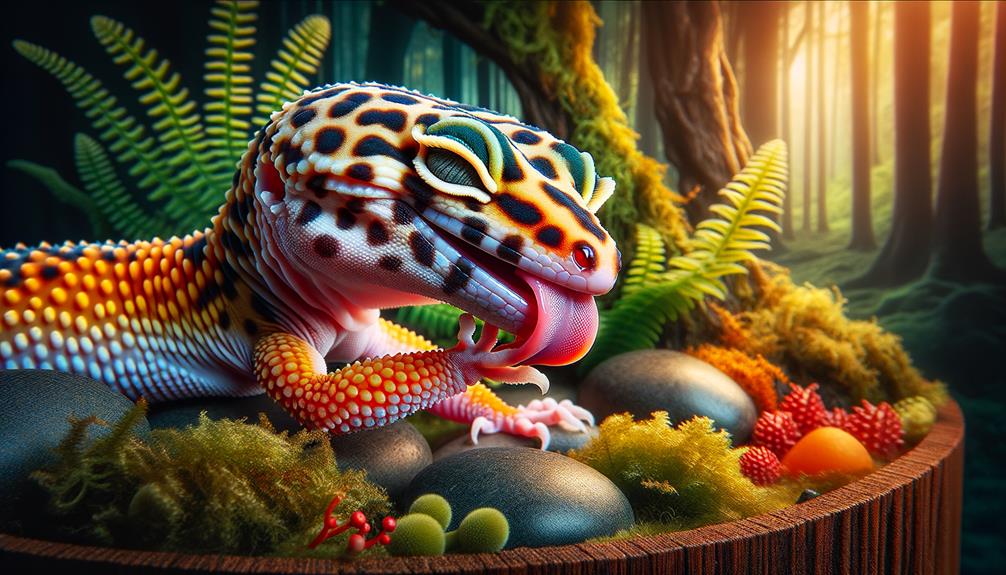
As a veterinary tech specializing in reptile care, I've seen firsthand how crucial regular veterinary check-ups are for leopard geckos. These visits can detect and treat eye problems early on, ensuring your gecko stays healthy.
A clean and hygienic habitat is vital for preventing infections and diseases that can lead to eye issues. Leopard geckos thrive in a temperature range of 82°F to 88°F, which allows them to regulate their body temperature effectively. A temperature gradient within their habitat is necessary for their comfort and health.
Diet also plays a significant role in preventing eye problems. Providing a balanced diet rich in vitamin A supports overall health. If your leopard gecko has retained eye caps, using a saline solution can help loosen and remove them, preventing infections.
Frequently Asked Questions
Why Is My Leopard Gecko Licking Its Eye?
My leopard gecko's eye-licking habit is probably due to discomfort caused by shedding, irritation, or debris. I should investigate if it's related to vitamin deficiencies or underlying health issues, and make sure its environment is stimulating to reduce stress.
How Do I Know if My Leopard Gecko Has an Eye Infection?
If you suspect your leopard gecko has an eye infection, look for common signs such as swelling, discharge, or frequent eye rubbing. If you notice any of these symptoms, don't hesitate to consult a veterinarian to ensure your pet's comfort and well-being.
Why Is My Leopard Geckos Eye Watering?
My leopard gecko's eye watering could be a sign of irritation, infection, or a blockage. To determine the cause, I need to consider factors such as the gecko's environment, diet, and whether it has retained its eye caps. By identifying the underlying issue, I can provide prompt and effective treatment.
How Often Do Geckos Lick Their Eyes?
Geckos frequently lick their eyes to keep them clean and moist. This behavior happens multiple times a day, ensuring their eyes remain free of debris and stay healthy.


